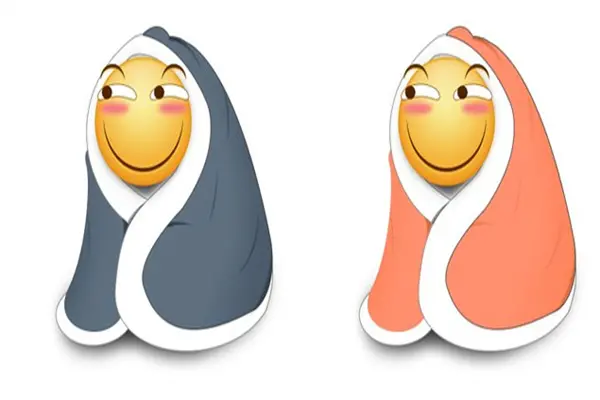"Funny", a made-in-China emoji, inclusively used on Tieba, the largest Chinese communication platform provided by the search engine giant Baidu, seems to have recently moved beyond just China.
Now, it is more than an emoji, but a cultural derivation.
Reaching global markets
A series of "funny" emoji-based bolsters have attracted the attention of Japanese customers through Amazon Japan, an online shopping center.
Even if one bolster costs about 1,750 yen ($16.73), more than three times the price in China, it doesn't dampen their desires to buy it.
One Japanese customer Miki said: "They are just so cute and I bought three bolsters at one time for my family. And every time I see them, my mood just brightens suddenly."
"I think the emoji implies very complicated meanings. Different people can read different things from it. For example, my dad will send it on the occasion when he did not agree with someone but he has to say something and behave politely. But one of my friends think it is nothing but an expression of fun," said one Japanese netizen Kiro Kara.
Reputed as one of the most popular emojis on Tieba, the "funny" emoji has received much attention since its release in 2013.
Addition to Domestic Social Media
Compared with Japanese people's impressions of the "funny" emoji, Chinese netizens prefer to use the emoji to tease one another on social media.
Reputed as one of the most popular emojis on Tieba, the "funny" emoji has received much attention since its release in 2013. Photo: China Daily
One commonly seen comment on the emoji in Zhihu, the Chinese version of Quora, is: "We strongly require Tieba to stop the usage of the emoji. Because every time other people send me the emoji, I feel very uncomfortable and consider myself as a fool."
Reputed as the most popular emoji on Tieba, the "funny" emoji has received much attention since its release in 2013.
A contrast of the "drool" emoji (left) and the updated "funny" emoji (right) [Photo provided to chinadaily.com.cn]
As a matter of fact, the "funny" emoji is the updated version of the "drool" emoji. Compared with the original, "funny" has a slightly opened mouth, a dull red flush and two eyebrows. And all these characteristics render users a sense of satire, according to one insider.
If you think the emotion is the only cause for the "funny" emoji to go viral online, then you are wrong. In the next several years, the "funny" emoji has undergone many transformations and gradually engulfed the internet.
For example, the emoji is the first one on Tieba to have multi-color variations in redNow that's Funny! Chinese emoji circles globe, orangeNow that's Funny! Chinese emoji circles globe, greenNow that's Funny! Chinese emoji circles globe, blue, bluish greenNow that's Funny! Chinese emoji circles globe and purpleNow that's Funny! Chinese emoji circles globe. When users utilize the shortcut key to send them together, its exaggerated effect is amplified. If you do not know this rule, you should check here.
Meanwhile, the "funny" emoji is well-adopted in many settings and successfully gains attention outside Tibeba. For instance, the Quilt-Covering, the Police-Acting and Smoking versions are causing a stir everywhere in Chinese social life.
Yao Ming's smiling emoji has emerged frequently in local traffic signs to remind people the road ahead is one-way. Photo: China Daily
Yao Ming's smiling emoji has emerged frequently in local traffic signs to remind people the road ahead is one-way. [Photo provided to chinadaily.com.cn]
In everyday use abroad
This is not the first time the Chinese emoji takes the world stage. Earlier this year, one emoji from the Chinese basketball celebrity Yao Ming has been spread through the Middle East region. In Luxor, a city in southern Egypt, Yao's smiling emoji has emerged frequently in local traffic signs to remind people the road ahead is one-way.
And you may be surprised to find that many locals do not know Yao Ming but are familiar with his emoji and nickname "Chinese Funny Face". What's more, the emoji has been picked up by the Egyptian English-language daily newspaper Egyptian Gazette as the title picture for its humorous column Serious but Funny.
What's more, due to the huge influences of Chinese Sina Weibo, the Chinese version of Twitter, many renowned western celebrities like Leonardo DiCaprio and Madonna have opened their personal accounts on the platform.
Many Chinese fans are excited about this and now choose to greet them with their own funny pictures, a behavior arousing the attention of foreign media. American private Internet media company BuzzFeed reported on the cultural phenomenon.
Many renowned western celebrities like Leonardo DiCaprio and Madonna have opened their personal accounts on Sina Weibo. [Photo/Weibo]
As a newly emerging online language, emojis have risen to become an integral part of people's daily life. Emojis are able to help people express their views in a more vivid and precise fashion. Also, it can help foreigners learn about Chinese culture and learn the language.
As Chinese emojis have slowly entered the world stage, how to properly use "the fifth innovation in China", a humorous name for emojis, without hurting others and how to turn them into commercial advantages still need answers.
 简体中文
简体中文


